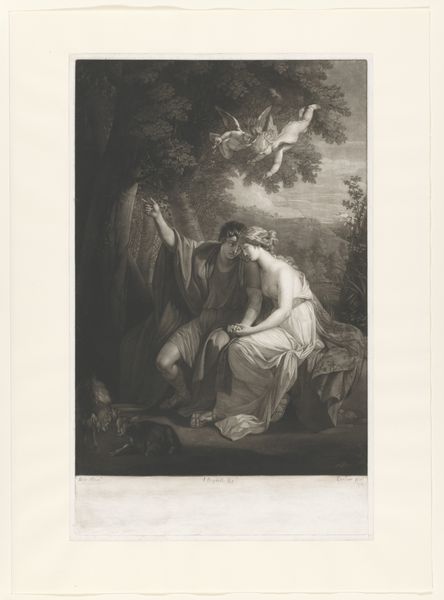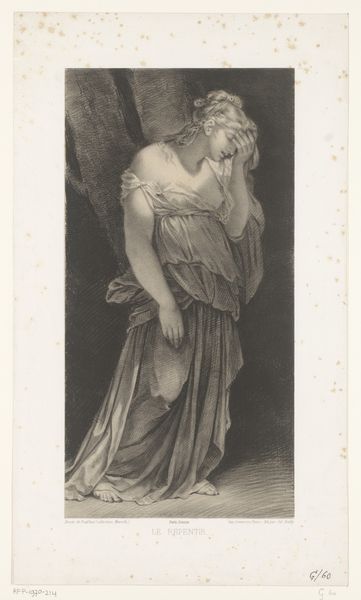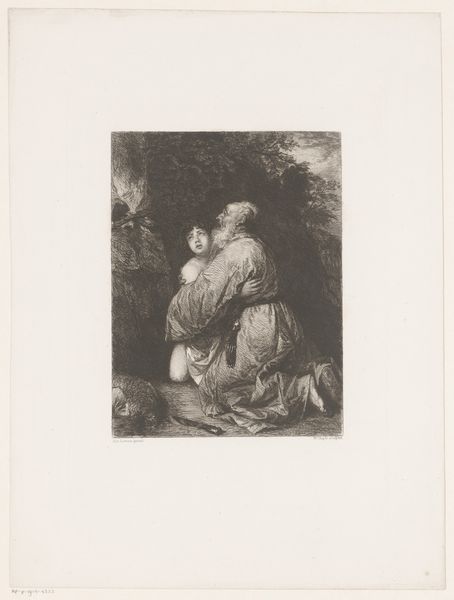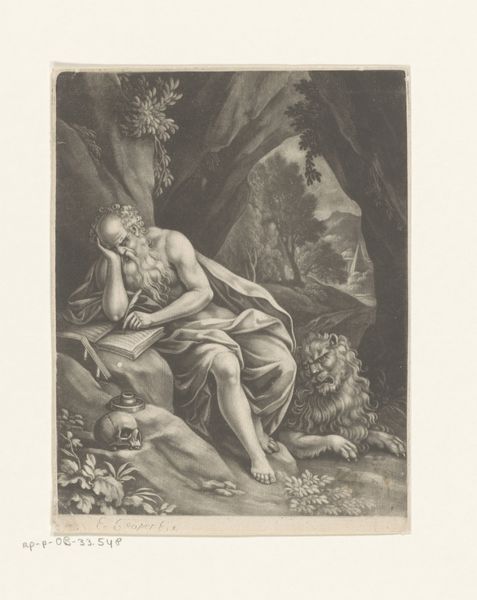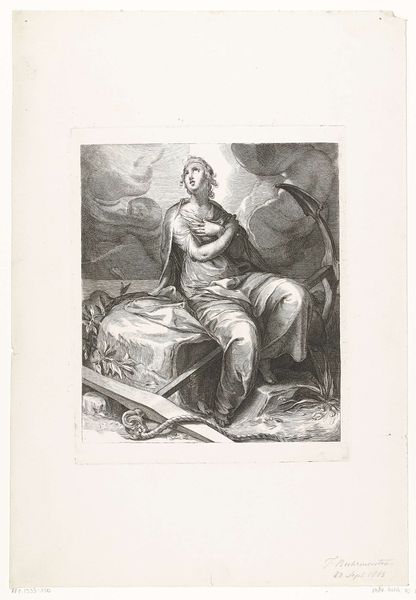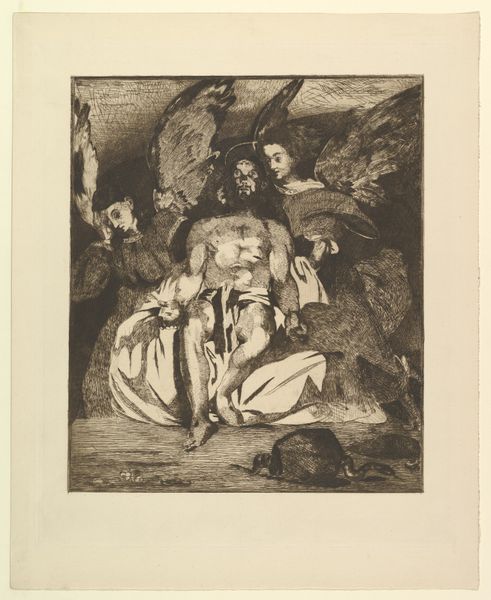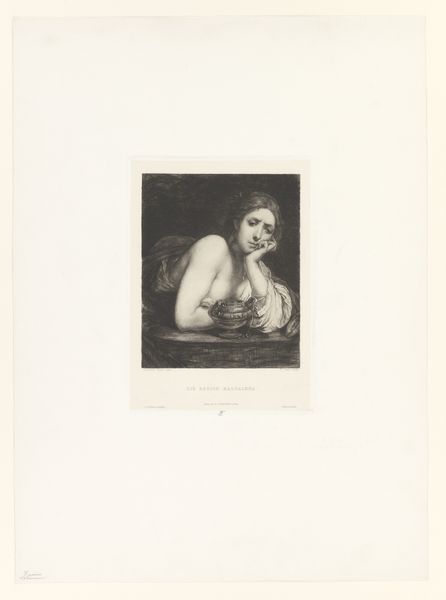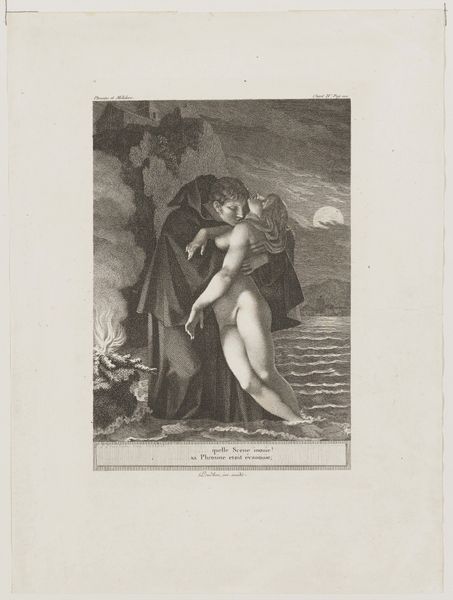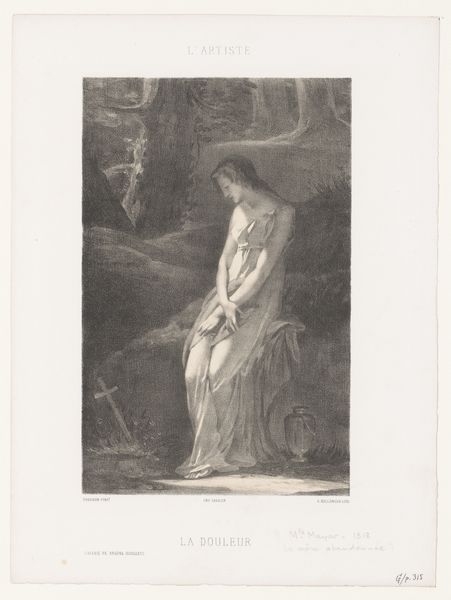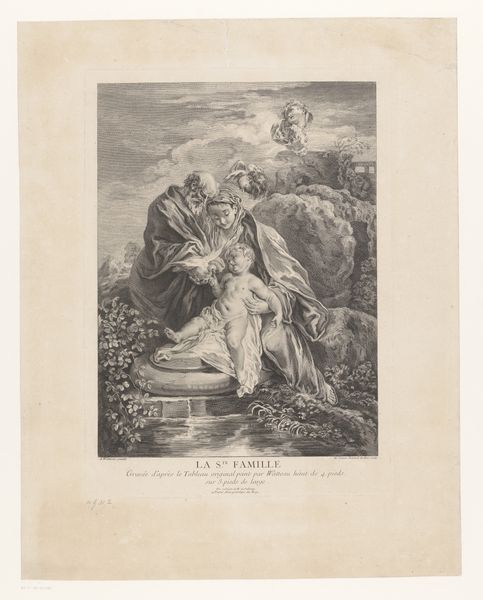
Dimensions: height 310 mm, width 230 mm
Copyright: Rijks Museum: Open Domain
This is Joannes Bemme’s “The Repentance of Mary Magdalene,” made using etching and burin techniques sometime before 1841. Look closely, and you’ll see how the etched lines define the form, from the contours of Mary’s face to the folds of her garment. Etching is an indirect process. The artist covers a metal plate with a waxy ground, draws through it to expose the metal, and then immerses the plate in acid. The acid bites into the exposed lines, creating grooves. A burin, on the other hand, is used to directly engrave lines into the plate. The resulting print, made by inking the plate and pressing it onto paper, bears the mark of these processes. The stark contrast and fine detail are characteristic of intaglio printing, where the image is held in the recessed lines. Consider the labor involved, the careful application of skill to produce an image meant for dissemination. While ostensibly a work of fine art, it participates in a much broader world of reproduction, and the democratization of images. Bemme’s print invites us to consider the means of production that underpin even seemingly unique artistic creations.
Comments
No comments
Be the first to comment and join the conversation on the ultimate creative platform.
